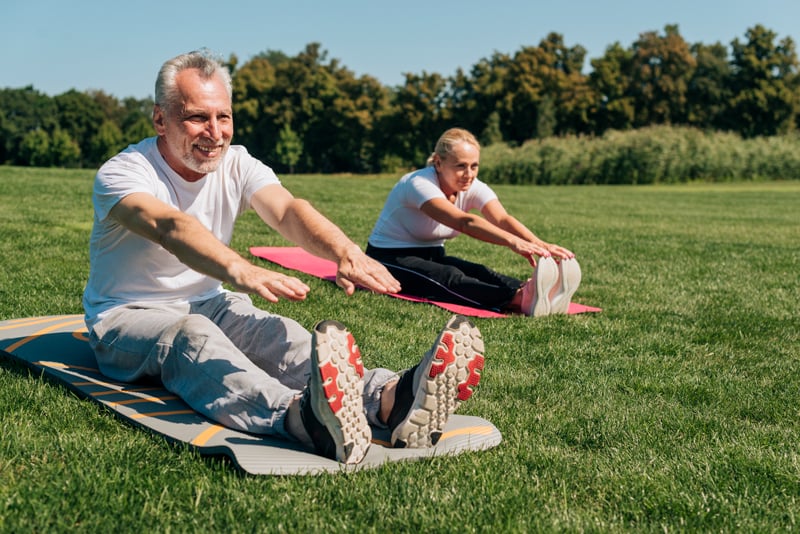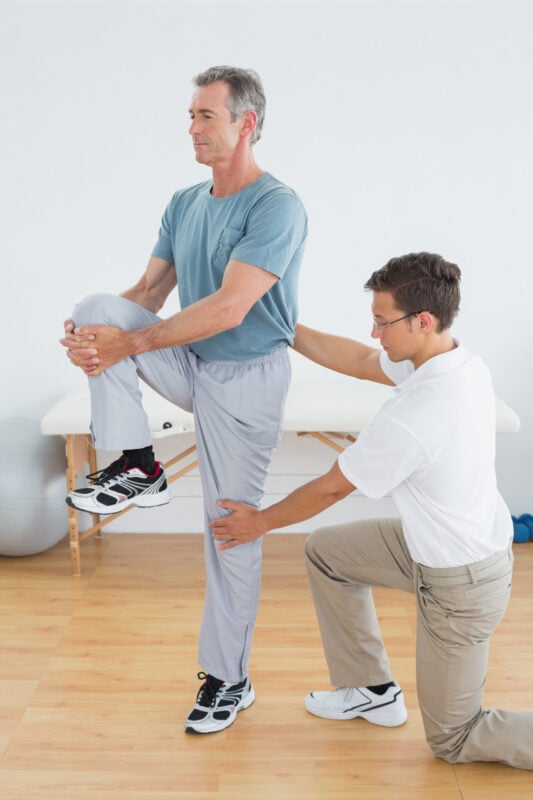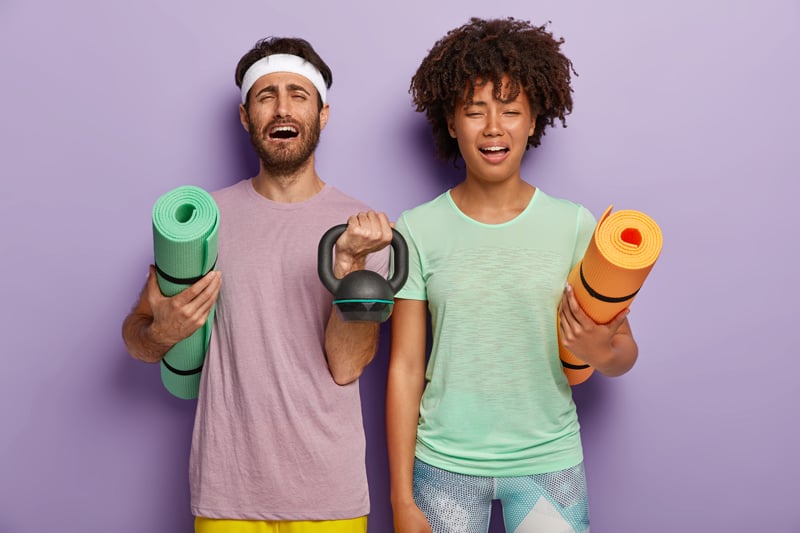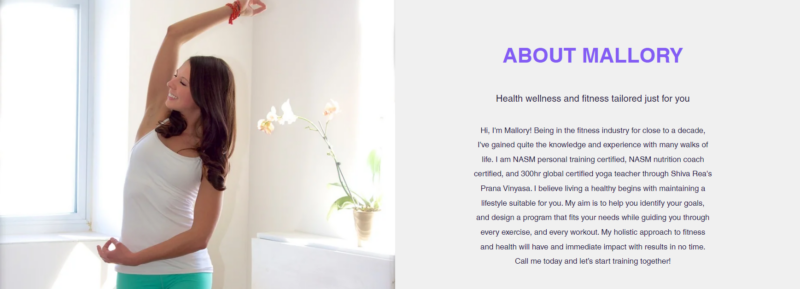What is Dynamic Stretching? Dynamic stretching is when you stretch your muscles with movement versus using static stretching; which is held for a period of time. Dynamic stretching is best to do BEFORE an activity, workout, or sport because it warms up your muscles and uses the parts of the body you will be working.
Have you ever seen a football player or whole team even doing leg swings before their game? They are warming up their joints and muscles that will be called on to play the game by increasing blood flow to their muscles, as well as raising their body temperature, and therefore increasing circulation, range of motion, and flexibility, allowing their bodies to perform at a higher level.
Another example is if you are planning to go on a run, you should try warming up with lateral lunges. Lateral Lunges target your glutes and quadriceps, which help to protect your knees and ankles.
“Dynamic stretching mimics the activity or the movement that you’re going to do in whatever sport or activity you’re about to start,” Dr. Rex says, a DO at the Cleveland Clinic. “It helps rehearse the movement patterns so the muscles tend to get excited a little bit earlier and faster which can help improve power and increase coordination.”
Dynamic Stretching is useful in stimulating your muscles and prepping your body for your upcoming activity, however it is also important to do static stretching AFTER a workout to help cool down and stretch the muscles to prevent post workout stiffness and maintain joint ROM (Range of Motion) and soft tissue extensibility.
Do you think of your PT as someone that you see when you need help with pain or an injury? They are more than that. Physical Therapists are Movement Experts and can help you determine which Dynamic Stretches would best fit into your exercise program. Think of your PT as your partner and coach, working with you to stay healthy for life.
7 Dynamic Stretches to Add to Your Warm-Up (and their benefits)
Leg Swings
Leg Swings move fluid in and out of your joints while stimulating blood flow in the surrounding tissue to improve not just the flexibility of the joint capsule, but also of the tissue that you’re going to be using for performance.
- Start to swing one leg back and forth while balancing on the other. You can hold onto a wall if needed.
- Swing forward and backward 5–10 times.
- Repeat with the other leg, swinging 5–10 times.
- Keep your back straight and avoid hyperextending your hip
- You can then face the wall and swing your legs from side to side, if desired.
High Knees
High knees improve cardiovascular endurance, burn calories, boost lower-body endurance and strength, improves coordination, and strengthens the abdominal muscles.
- Begin by jumping in place.
- Lift one knee up to hip height before rapidly switching to the other side like you are marching in place.
- Quickly alternate from side to side for at least one minute.
Arm Circles
Arm Circles are an easy way to get your blood moving and can help to build muscle tone in your shoulders, triceps, and biceps.
- Bring your arms out to the side like you’re making the letter “T”
- Next, make circles with your arms.
- Begin with small circles in one direction, then increase the size of the circles.
- Repeat in the opposite direction.
- Do this for 30 to 60 seconds.
Jumping Jacks
Doing Jumping Jacks increases your heart rate, which promotes the flow of blood and oxygen to your brain and heart, stimulating those muscles.
- Start in a standing position with arms by your sides.
- Bring arms overhead as you jump and straddle.
- Return arms to starting position.
- Repeat at least 30 times.
Heel Walks
Heel Walks will help improve the functional range of motion and stability of the ankle, as well as, strengthen the muscles around the shin to reduce shin splints.
- Start off by standing with good posture, chest up & out and shoulders back.
- Raise both of your toes off the ground.
- Step forward with your right leg and drive your heel into the ground.
- Keep the toes pointed upwards at all times.
- This will help strengthen your tibialis anterior, the muscle around the front of your shin.
- Then step forward with your left leg.
- Continue this process for 30 seconds to 1 minute.
Toe Walks
Toe Walks will help strengthen your calf muscles and also increase the functional range of motion and stability of the ankle joint.
- Start off by standing with good posture, chest up & out and shoulders back.
- Raise both of your heels off the ground, balancing on the balls of your feet.
- Step forward with your right leg, driving the ball of your foot into the ground. Toes should be pointed down. This will activate and isolate your gastroc-soleus muscles, your calf muscle groups.
- Then step forward with your left leg.
- Continue this process for a total of 30 seconds to 1 minute.
Lateral Lunges (“Side Lunges”)
Lateral lunges develop balance, stability, and strength. They work your inner and outer thighs and may even help to reduce the appearance of cellulite. Side lunges train your body to move side to side, which is a nice change from your body’s normal forward or twisting movements.
- Start by standing tall, feet hip-width apart
- Bend your left knee as you push your hips back and step to the right, then return to start position.
- Alternate to the left and repeat; keep toes pointed forward.
- Keep both feet flat on the floor throughout the lunge.
- Be sure to keep your back straight the entire time.
Keep Reading…
Spring Back Into Motion: Preventing Overuse Injuries
As flowers bloom and the days get longer, it's natural [...]
What Can Physical Therapy Do To Help You With Multiple Sclerosis?
Multiple sclerosis (MS) can be an overwhelming diagnosis. [...]
How To Create Sustainable Exercise Habits in 2025
Regular exercise is one of the best things you [...]
How To Build Lean Muscle: The Ultimate Guide
Building Lean Muscle Building lean muscle is more than [...]
The Great Outdoors | Unveiling The Benefits of Outdoor Exercise
In an age where digital screens dominate our lives, [...]
Daily Stretching | A Guest Blog by Mallory Wisniewski Fitness
A Guest Blog By Mallory Wisniewski 300HR CYT & [...]







